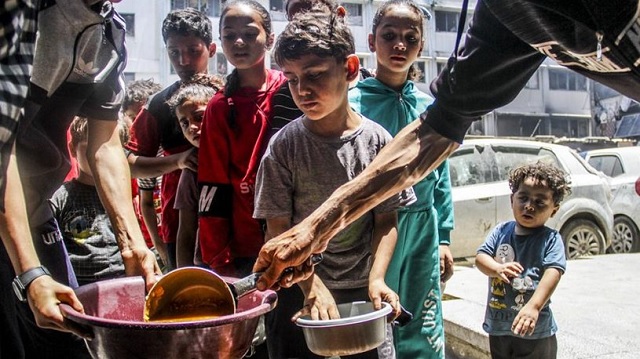
ROME, ITALY | Xinhua | The entire Gaza Strip is at high risk of famine, the Food and Agriculture Organization of the United Nations (FAO) warned on Wednesday.
The alarm was raised as a new report has shown that almost the entire population is facing “acute food insecurity, with 1 in 5 Gazans being on the verge of famine,” FAO stated.
Around 459,000 people in Gaza (22 percent) are in a state of “catastrophic food insecurity,” while almost the entire population (96 percent) is facing “crisis levels of acute food insecurity or higher,” according to the paper published by the Integrated Food Security Phase Classification (IPC) Global Initiative.
The situation is a result of the ongoing Israel-Hamas conflict and current restrictions on humanitarian convoys into Gaza.
Commenting on the latest findings at a press conference in New York, FAO chief economist Maximo Torero said the agency had observed a high risk of famine over the last eight months. “The relentless hostilities … as well as limited access to those in need of urgent humanitarian aid have had severe impacts on the entire population in Gaza,” he said.
Despite some recent improvements in the flow and access to food and water in northern Gaza, the situation remains very fragile, and vulnerable to a rapid deterioration into famine, he added. While intense ground operations in northern Gaza continue, forced displacement of people could exacerbate the food security situation in the whole Gaza Strip.
“With some 96 percent of the population facing … acute food insecurity, any deterioration may push more people into catastrophic levels of hunger,” the FAO chief economist stressed. “(This would happen) For example, if the level of permits and access of humanitarian trucks to Gaza declines and does not increase substantially.”
The FAO is scaling up efforts to prepare essential food production inputs for transportation to Gaza by mobilizing advanced procurement arrangements, once access is granted. It has appealed for around 40 million U.S. dollars, of which 29 million would be allocated to Gaza and 11 million to the West Bank.
Before the conflict, agriculture provided 20-30 percent of daily consumption, but more than 57 percent of agricultural land in Gaza has been damaged as of May 2024, the FAO said. ■
 The Independent Uganda: You get the Truth we Pay the Price
The Independent Uganda: You get the Truth we Pay the Price



